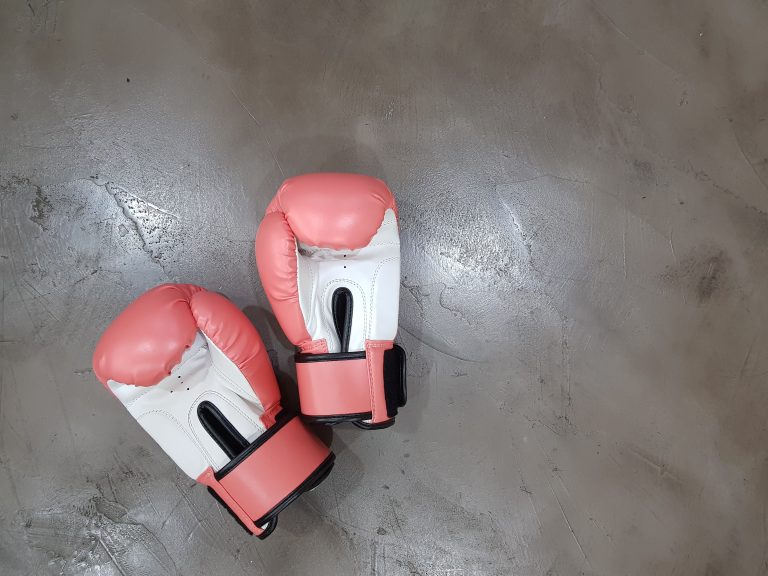Karate-Trainingsplan: Ein systematisches Konzept zur Verbesserung deiner Fähigkeiten
Karate gehört zu den beliebtesten Kampfsportarten weltweit. Es ist eine Kunst, die Schwachstellen und Stärken eines Körpers erkennt, um unerreichbare Höhen zu erreichen. Es gibt jedoch keine Abkürzung zum Erfolg und die einzige Möglichkeit, zu wachsen und Wissen und Fähigkeiten zu erweitern, ist der Plan.
In diesem Blogbeitrag werden wir uns auf einen systematischen Karate-Trainingsplan konzentrieren, der dir dabei helfen wird, deine Fähigkeiten zu verbessern.
Phase 1: Das Warm-up
Bevor du mit deinem Training beginnst, ist es wichtig, dass du dich richtig aufwärmst. Das kannst du zum Beispiel mit folgenden Übungen erreichen:
- Laufband
- Kniebeugen
- Dehnen
- Hüftrotationen
Das Ziel des Warm-ups besteht darin, deinen Körper auf das bevorstehende Training vorzubereiten und das Verletzungsrisiko zu minimieren.
Phase 2: Grundtechniken
Nach dem Warm-up solltest du dich darauf konzentrieren, deine Grundtechniken zu verbessern. Die Grundtechniken sind die Basis deines Karate-Trainingsplans. Das kannst du zum Beispiel mit folgenden Übungen erreichen:
- Grundschläge (Jab/ Cross/ Haken)
- Grundtritte (Frontkick/ Sidekick/ Roundhousekick)
- Gleichgewichtsübungen
- Beinarbeit
Es ist wichtig, dass du deine Grundtechniken regelmäßig übst, um sie zu festigen.
Phase 3: Kata
Nachdem du deine Grundtechniken perfektioniert hast, kannst du mit der Übung von Kata beginnen. Kata ist eine choreografierte Bewegungssequenz mit Angriffs- und Verteidigungselementen. Hier sind die wichtigsten Faktoren, die du während deiner Kata-Übung berücksichtigen solltest:
- Timing
- Rhythmus
- Atmung
- Koordination
Es dauert Jahre, um eine Kata fehlerfrei auszuführen. Aber mit jeder Übung wirst du besser.
Phase 4: Konditionstraining
Karater-Training ist hart und erfordert eine gute Kondition. Es ist wichtig, dass du regelmäßig Konditionstraining durchführst, um deine körperliche Fitness zu verbessern. Das kannst du zum Beispiel mit folgenden Übungen erreichen:
- Laufband
- Sprints
- Liegestütze
- Hanteln (für Krafttraining)
Phase 5: Cool Down
Nach dem Konditionstraining solltest du immer eine Cool-Down-Phase einlegen. Das kann zum Beispiel durch ein paar Minuten auf dem Laufband oder durch Dehnen erreicht werden. Die Cool-Down-Phase hilft deinem Körper, sich zu regenerieren und vermindert das Verletzungsrisiko.
Fazit
Ein systematischer Karate-Trainingsplan ist unerlässlich, um deine Fähigkeiten zu verbessern und erfolgreich zu werden. Es ist wichtig, dass du dich regelmäßig an deinen Trainingsplan hältst und dich auf jede Phase konzentrierst. Stelle sicher, dass du genug Zeit und Energie investierst, um das zu erreichen, was du möchtest.
The Ultimate Karate Training Plan: A Systematic Approach to Boost Your Skills
If you’re looking to enhance your karate abilities and become a better fighter, a well-designed training plan is a must-have. By developing and following a structured approach, you can not only strengthen your fundamentals but also lessen the likeliness of fatigue, injuries, and over-training. In this blog post, we’ll address some of the most common questions related to crafting a systematic karate training plan.
What Is A Karate-Trainingsplan?
A Karate-Trainingsplan is a systematic and structured approach to karate training that outlines the frequency, intensity, and volume of various exercises. It is designed to maximize your training outcomes while minimizing your chances of getting injured or burnt out. A properly developed training plan should consider your current abilities, fitness level, past injuries, and goals.
How Can I Develop A Karate Training Plan?
Developing a karate training plan requires some time and effort, but it’s not that hard if you follow a few key steps:
- Establish Your Goals – Define what you want to accomplish with your training plan. Do you want to enhance your speed and agility or increase your muscle mass and power?
- Assess Your Current Fitness Level – Before starting any training program, evaluate your fitness level. Consider your flexibility, strength, endurance, and other key factors that might affect your training.
- Create Your Training Schedule – Decide how many days per week you’re going to train and which specific days. Also, consider how long you’ll train during each session.
- Define Your Training Program – Build a program that entails various exercises, such as striking techniques, forms, sparring, and conditioning. Be sure to create a balance between resistance training and cardio and pay attention to recovery and rest days between sessions.
- Track Your Progress – Record the exercises you’ve done, the number of sets and reps, and your progress over time. Tracking your progress is essential to see your improvement and correct your plan if you’re not progressing.
What Are The Benefits Of A Karate Training Plan?
A well-designed karate training plan comes with numerous benefits, including:
- Improved Performance – With consistent training, you’ll get better at performing karate techniques, and your skills will gradually improve.
- Fitness and Health – Karate training is an excellent way to get in shape and healthier. The cardio, resistance, and conditioning aspects of the training will improve your overall health and fitness level.
- Reduced Injury Risk – Having a structured training plan with proper rest and recovery days can reduce the risk of getting injured while training.
- Long-Term Success – By planning your training strategically and tracking your progress, you’ll be better equipped to achieve your long-term goals.
What Are Some Key Components Of A Karate Training Plan?
A comprehensive karate training plan should feature a combination of various components, including:
Techniques
Karate techniques form an essential part of any karate training program. It’s important to perform a range of techniques, like strikes, blocks, kicks and grappling, in multiple angles to advance the fundamental movement patterns.
Forms
Karate forms are often called kata or patterns, and it is a sequence of techniques performed in a particular order. This training is critical for improving your body control and martial arts techniques. Ensure you perform forms for a minute or two in sequences.
Sparring
Sparring is like mock fighting that helps you improve your reaction speed, timing, footwork, and distance. This training tool helps you prepare for real combat situations and is an excellent way to test the effectiveness of your techniques.
Conditioning
Conditioning involves exercises that aim to strengthen your body, including cardio workouts, resistance training, and drills. Conditioning will help you build body’s stamina and effectively perform for an extended period of time.
Rest and Recovery
Rest and recovery are often overlooked but are equally significant aspects of any karate training plan. Dedicate two-to-three days per week to rest and recovery. To avoid burnout and injury, plan your training wisely and listen to your body.
Final Words
In conclusion, developing a systematic karate training plan can make all the difference between reaching your goals and falling short. Be sure to prioritize rest and recovery, balance resistance training with cardio, and track your progress to stay motivated. With a well-designed training plan, focused effort, and time, you’ll become a better karate fighter, enjoying better fitness, and achieving long-term martial arts success.
Inhaltsverzeichnis






